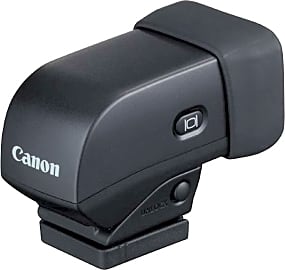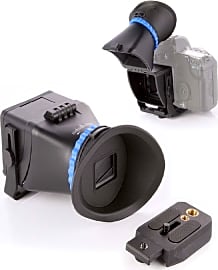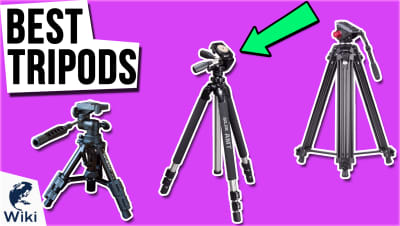The 9 Best LCD Viewfinders

This wiki has been updated 40 times since it was first published in December of 2016. While a majority of digital cameras have their own viewing screens, they don't always offer the level of accuracy, contrast, and depth needed to ensure that perfect shot. With one of these LCD viewfinders acting as a sun shade and magnifying glass for a camera's line of sight, you'll succeed in obtaining unobstructed views of all intended targets, regardless of the surrounding light conditions. When users buy our independently chosen editorial choices, we may earn commissions to help fund the Wiki.
Editor's Notes
May 17, 2019:
I know from personal experience that taking high-quality photos (and capturing great video) with my digital camera in bright sunlight can be a daunting task, particularly with modern equipment that makes use of an LCD. I personally have a Canon DSLR device and could certainly benefit from one of these viewfinders to help cut the glare and magnify my targets, whether they're my standard poodles or a lovely scene of the Quail Lodge golf course in Carmel Valley, CA on a sunny day. Having both an unobstructed view and an ability to zone in on the perfect image is extremely important. That said, I wanted to make sure this wiki kept both those values as top priorities.
I maintained the Zacuto Z-Finder Pro for its fog-resistant optical lens and adjustable diopter. I added the Hoodman Hoodloupe because of its three-lens optical module and ability to work with several mounting bases, which comes in very handy if you happen to purchase new cameras and upgrade to larger screen sizes. While the Canon EVF-DC1 is more of a "niche" product that works with just a couple of devices, its electronic operation and 2.36-megapixel resolution still makes it a worthy option. Offering 90 degrees of upward tilt, it's also a terrific option for use when snapping photos at low angles or in tight spaces. I kept the Kamerar QV-1 for its magnetic quick-release baseplate and adjustable diopter ring that allows for back-and-forth movement of the lens with ease. Its convenient flip-up design also allows it to be used as a sun shade. Similar to the Movo Photo VF40 that I removed, the Sevenoak SK-VF sets itself apart from others in its class with its vacuum-cemented, achromatic optical components for correcting color inconsistencies when taking photos in bright conditions. I also included the Runshuangyu Universal for its compatibility with tripods and shoulder mounts, while its angled sun hood makes it well-adept at providing easy access to cameras with touchscreen interfaces. Maintained the ECostConnection Elite for its affordable price, 3.4x magnification, and microfiber cleaning cloth. Finally, the Elvid OptiView lends itself well to assisting photographers who use thick eyeglasses.
The Power Of The Viewfinder
On a camera, the viewfinder was a way for directors and cinematographers to frame up their shots and to operate the camera without any external distractions.
For the majority of film history, if you wanted to see what the camera was shooting as it was shooting it, you had to look through the viewfinder. On a camera, the viewfinder was a way for directors and cinematographers to frame up their shots and to operate the camera without any external distractions. Eventually, cameras were outfitted with connections that could relay a live video feed to a monitor, but this setup often necessitated that the director or whomever wanted to watch said monitor be at least a few feet away from the action, staring at a screen in a place known as video village.
The great and prolific Werner Hertzog, when speaking of his directorial technique, says that he dislikes the video village, and prefers to get as close as possible to the camera as it's shooting, so that he can get an idea of what it sees. It's worth noting that he always leaves his camera operation to his cinematographer. Modern shooters have the luxury of small, lightweight outboard monitors that can easily mount on a camera rig or exist in the traditional video village setup, often connected by a reliable wireless feed. Many other directors, especially indie directors, like to either operate the camera themselves or have their own personal monitor to view the action as it unfolds.
The problem with all of these monitor setups is that viewing them includes within your vision much more information than what is just being recorded. Additionally, if you’re shooting in an environment with a lot of harsh light, you may not be able to make out what’s on the screen at all due to glare. It would be far preferable if you could just look through the camera, but this is rarely an option in the digital age of indie filmmaking.
Without such amenities as a video village, wireless monitors, or even a small monitor to mount on the camera rig, indie filmmakers often have to rely on the LCD screen at the back of their camera body for both framing and shooting. That's because, when using a DSLR to shoot video, the camera's internal mirror can't remain in the position that allows the viewfinder to see what the camera sees. The LCD is the only means by which you can see your frame. Mirrorless cameras with electronic viewfinders give you the opportunity to use either the LCD or the viewfinder for these purposes, but these cameras are still built with a still shooter’s body design, meaning that their viewfinders are awkward to look through for extended periods.
To account for this, DSLR videographers and cinematographers turn to LCD viewfinders. These brilliant little devices create a closed environment around the LCD screen at the back of your camera, and feed its image either directly or through a series of mirrors to a full-sized viewfinder. They are much more comfortable to use, and they put you in direct touch with nothing but the frame that you're shooting, so you can see exactly what the audience will eventually see.
Choosing An LCD Viewfinder
Essentially, any device that will isolate you and your LCD in a kind of cocoon of darkness would allow you to shoot in a particularly intimate and effective way. I've even seen people construct their own viewfinder boxes out of little more than cardboard. The problem with these arises when you have any kind of camera movement, when you need access to your LCD screen, or when you need to mount the camera onto any kind of reliable rig. While these issues are particularly notable with DIY viewfinders, they each present an interesting point of consideration when evaluating manufactured LCD viewfinders like the ones on our list.
For example, both camera moves and access to the LCD screen itself bring up the question of adaptability.
For example, both camera moves and access to the LCD screen itself bring up the question of adaptability. Can the viewfinder that you might purchase allow you to see through it during the camera move? Can that viewfinder get out of the way when it needs to if you need to access any of the touchscreen features common on modern LCD screens, like menus, settings adjustments, and even focus pulling?
When rigging up your camera, it'll be important to understand exactly how your view finder attaches to the camera body. Some fasten to bodies with little more than elastic straps, while others rely on the 1/4-20-inch hole at the bottom of the body for security, and still others readily integrate within a rails system. If you end up going with model that relies on the 1/4-20 hole on the underside of the camera, make sure you're not going to need it for anything like a quick-release plate or other mounting system.
Other Excellent Filmmaking Accessories
Making a film without a lot of money is very difficult, but it is also increasingly possible given the amount of great tools available on the market for filmmakers on a budget. LCD viewfinders are a prime example of one such technology, but they're far from the only smart investment you can make.
Handheld cinematography gets old fast, especially if it's inappropriate for the scene at hand.
Sound is quite possibly the most important aspect of any film, so making sure you have at least halfway decent sound gear is vital. For DSLR shooters who would be using an LCD viewfinder, there are incredible shotgun mics designed to sit right in the hot shoe on the top of your camera. With a little massaging in post, and a little ADR, you may be surprised at the quality product you put out.
A good tripod and a tripod dolly will become your camera’s best friends in no time. Handheld cinematography gets old fast, especially if it's inappropriate for the scene at hand. Adding movement and stability from these two tools will elevate the look of your film significantly.
Finally, if you really want to start making your scenes pop in a way that natural light just can't seem to achieve, you're going to want a video lighting kit. These are available for all budgets and all types of filmmaking, so there's definitely a set out there for you.














